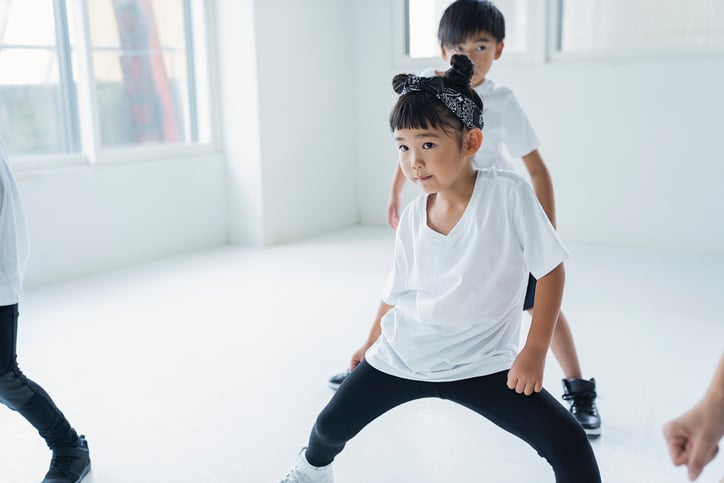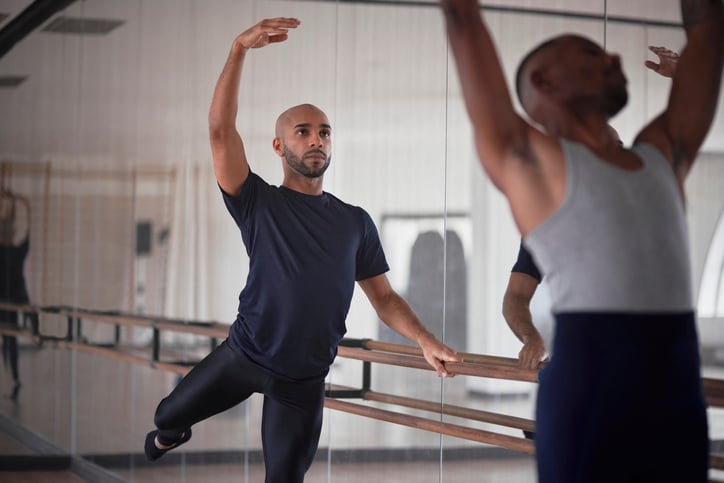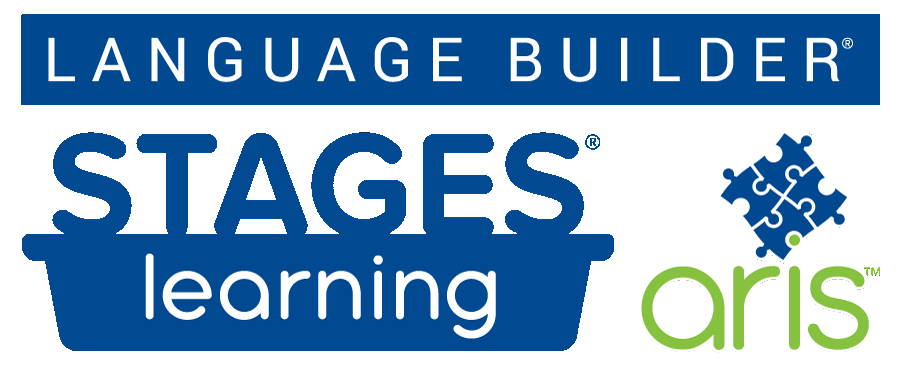
Dancing is a universal language, and many on the autism spectrum can easily learn it.
In my time at college, I had the privilege of taking a dance class. I needed the credit for my major, and, I confess, I was apprehensive at first. Not only did I not have any dancing skills, but I was also one individual in a class of over 20 experienced dancers.
Coupled with my autism-related personal quirks (i.e. getting kicked off a T-Ball team in First Grade because I “didn’t get it”), I knew it would be an interesting ride in terms of sight, sound, physical stimulation, and personal contact.
I proved to be quite right, especially after the instructor asked me to join the dance troupe, which I (very regretfully) declined. By the semester’s end, I found myself both physically and mentally more fit than before, and I also gained a significant amount of confidence that I craved as a first-year student.
Why Dance Therapy?
Unique as it may sound, dance therapy is making gains in the field of autism therapy. As Maria Meyer LeFeber writes in the 2010 edition of Cutting Edge Therapies for Autism:
For children affected by autism, movement may be the only language they can rely on, making it extremely difficult for them to reach out to others. When words fail, dance/movement therapy fosters a child’s ability to relate, communicate, and connect on a nonverbal level.
Apart from just looking and feeling good on the dance floor, LeFeber states that dance/movement therapy provides space for said individuals to explore and discover their bodies while unlocking creative potential.
The Benefits of Dance Therapy
For personal growth, I found dance therapy to have numerous benefits, a few of which I retained to this day. Others on a higher-functioning level may find both a good form of therapy as well as a passion in this particular field, along with a cheap and easy way to have fun.
Focus and Physical Skills
It’s a given, but dance requires maximum concentration. Physical in nature, it easily comes with the risk of injury, which all parties must be prepared for.
I never suffered any injuries, thankfully, but my first rounds as a dancer were full of stumbles and clumsily executed moves. I was never an athlete, and my joints had always been relatively stiff from lack of exercise. As I progressed, I felt my limbs grow more nimble and even fitter in some spots.
Rarely in my life did I ever enjoy a physical-based activity, but this mode proved to be as motivating for me as it was physically challenging, and many on the spectrum may find just the right outlet they need for physical activity.
Many on the spectrum may also benefit from the tranquility that an effective dance session offers. In an environment with good music and almost ritualistic dance drills, people with autism may find their center as they advance through the session. Coordinated movements can help them become more physically mobile while, at the same time, enhancing concentration.
On a side note, some on the spectrum who have trouble with stimming may also find a good physical outlet to release any pent-up energy. I myself carried an unusual tick for many years until taking my dance class. The physical awareness I gained in one semester helped put an end to this little quirk - although I still have similar episodes with my hands to this day.

Communication and Social Skills
For those on the spectrum who may have trouble with speech or are sensitive to touch, dance therapy can be a unique starting point to make effective connections with them.
Being a novice dancer, I was indeed intimidated by those around me who knew what they were doing. Yet, when paired with other individuals, it wasn’t hard to find a certain chemistry without any spoken words or physical touch. One person moves, and the other(s) follow suit through simple steps and movements.
Similarly, Christina Devereaux writes of a unique experience she had with a young girl on the spectrum who faced many personal challenges.1 Although unable to communicate effectively, the girl showed good reception toward dance moves and instruction taught by Devereaux. As she grew to mirror Devereaux in her movements, in time, she expressed her first verbal "Hi."
In the right environment and time, one on the spectrum can easily develop communicative abilities as they become more receptive - and trusting - of other parties with them.
As Devereaux emphasizes:
It is important to note that the intention is to first understand the person with autism, to join with them, and then to help them modify their communication in a way so that repetitive restrictive behaviors can become channeled, the nervous system can settle, and social engagement can begin. This is dance/movement therapy’s starting point.
A Forgiving Learning Environment
It’s certainly true that failure is the greatest teacher of all, and dance is rife with failure.
By this, I mean in creating an effective routine, one must undergo a period of trial and error. Nobody will master dance moves on their first, second, or third try. It takes patience, as well as constant repetition and polishing.
Likewise, dance is an art where one is required to experiment with new techniques and recover from any mistakes made along the way.
My first month in this environment was full of stumbles. I flew like a swan one second, then crumbled like a crab the next. What did the instructor do? Tell me how to loosen my limbs and try again. A session later, he taught me proper breathing techniques, and so on. In a matter of days, I felt myself becoming more in tune with my movements and myself.
All it took was a little hard work - and a desire to get a good grade.
I found this environment to be quite enriching as mistakes could be corrected by trying over and over again, regardless of experience or personal background. In addition to learning physical awareness, those on the spectrum will also learn the basic importance of pursuing a goal without giving up.
This particular mode of learning can easily branch out into other fields, as it did for me - and this is where the true benefits of dance therapy lay.

Final Thoughts
I'll never forget the moment the instructor requested we all grab a partner for a quick session. I do not recall the lady's name, but for a minute, the two of us hit it off without saying a word. She moved, and I repeated her movements. As I began to improvise, she followed suit in my movement. Neither of us spoke a word to each other, but we still communicated through the movement of our bodies.
The smile on her face told me she was having fun, and I felt awkward no more.
What was easily one of the best moments of my university experience occurred in a dance class, and I walked out of it with a degree of confidence I had not felt in years.
Anyone interested in this field of therapy will relish the benefits that, like swimming or biking, stay with you forever. If no professional options are available, thankfully, there are plenty of tutorials and instructive classes online that can be accessed for free. Even today, I find time to learn a few new moves with nothing more than my laptop and a big open space.

So if you or a loved one on the spectrum need just the right thing for personal growth, all you may need is a simple dance routine, whether in person or online. You will find something both mentally and physically stimulating, and the bonds you create with others will be equally enriching.
We hope you enjoyed the information in this article. STAGES® Learning also offers free downloadable resources to support teaching and learning with individuals with autism. Start with our free Picture Noun Cards and see our collection of other downloadable resources here!





